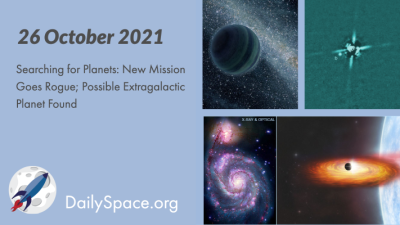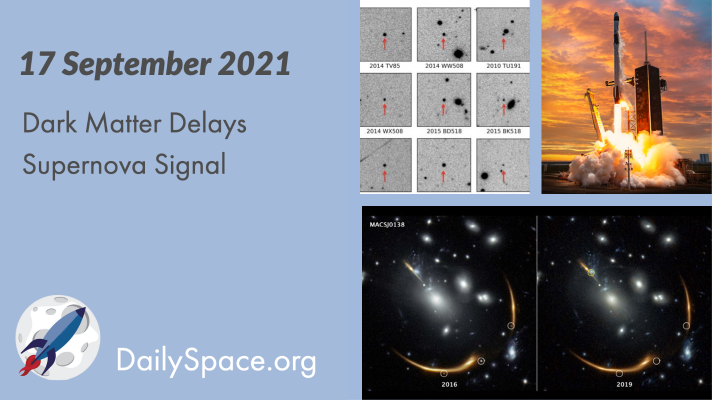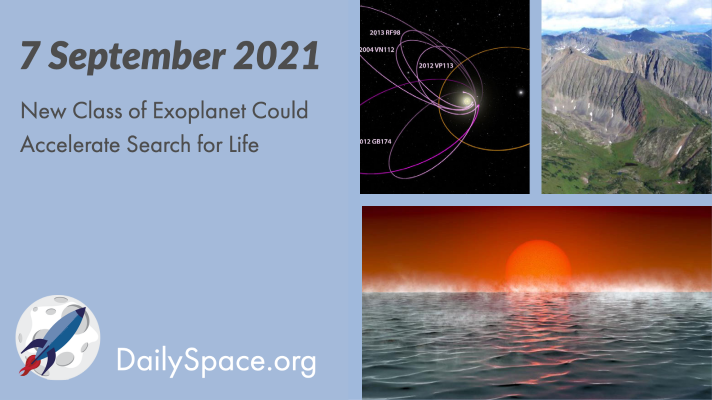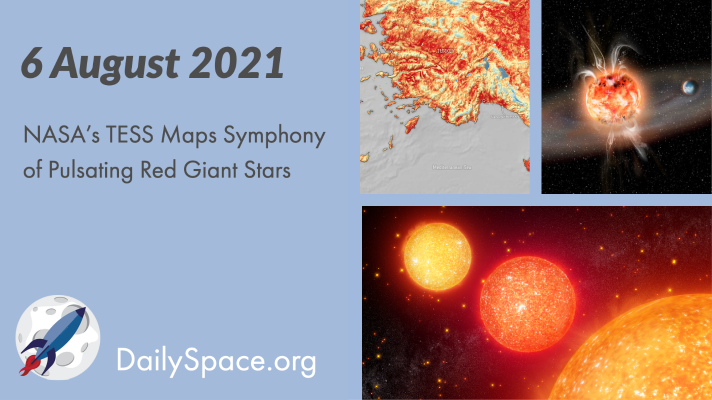
Oct 27, 2021 | Daily Space, Exoplanets, Galaxies, Guest Interview, Observatories, Saturn, Spacecraft, Supernovae
A proposed mission called the Contemporaneous LEnsing Parallax and Autonomous TRansient Assay, or CLEoPATRA, seeks to work with the Nancy Grace Roman Telescope to find rogue planets not orbiting any star. Meanwhile, a possible planet has been discovered in the Whirlpool Galaxy and could be the first planet found outside the Milky Way. Plus, an interview with Dr. Margaret Meixner, Director of Science Mission Operations for the SOFIA telescope.

Oct 20, 2021 | Asteroids, Daily Space, Globular Cluster, Jupiter, Lucy, Our Solar System, Spacecraft, Supernovae, Titan
Today we whirl through some of the stories that happened last week while we were on hiatus, including pretty images of two galaxies merging and a lovely supernova, as well as news about moons Europa and Titan. Plus, we interview Dr. Julie Rathbun, a senior scientist at the Planetary Science Institute.

Sep 24, 2021 | Asteroids, Daily Space, Earth, Galaxies, Mars, Moon, Neptune, Observatories, Rovers, Sky Watching, Supernovae, Uranus
While searching for objects deep in the universe’s history, at about three billion years of age, researchers found six massive but “dead” galaxies in Hubble and ALMA data, a strange finding for a time period known for prolific star birth. Plus, planetary science from the EPSC2021 conference and this week’s What’s Up.

Sep 20, 2021 | Asteroids, Climate Change, Comets, Cosmology, Crewed Space, Daily Space, Dark Matter, Earth, Galaxies, Review, Space China, Spacecraft, SpaceX, Supernovae
A supernova first observed in 2016 will be replayed in a few years because of the light’s journey through a galaxy cluster and how dark matter gravitationally warps space-time. Plus, inactive centaurs, a Scottish ice wall, and a review of “Countdown: Inspiration4 Mission to Space”.

Sep 8, 2021 | Asteroids, Astrobiology, Climate Change, Daily Space, Earth, Exoplanets, Galaxies, Mars, Neutron Stars / Pulsars, Our Solar System, Perseverance, Supermassive Black Holes, Supernovae, Very Large Array
Hycean worlds have hydrogen-rich atmospheres and are covered in oceans, making them prime candidates for the search for life outside our own solar system. These worlds are also more numerous and easier to find than Earth-like exoplanets. Plus, an update on the search for Planet 9 and how volcanoes may provide a climate safety valve.

Aug 9, 2021 | Climate Change, Daily Space, Earth, Exoplanets, Neutron Stars / Pulsars, Planetary Nebulae, Stars, Supernovae
NASA’s TESS spacecraft, which is primarily used to search for exoplanets, has now observed a veritable symphony of pulsating red giant stars, each with its own internal vibrations. This work was presented at this week’s TESS Science Conference. Plus, some more climate change news (bad) and superflares may be less harmful to exoplanets than thought (good).








 We record most shows live, on Twitch. Follow us today to get alerts when we go live.
We record most shows live, on Twitch. Follow us today to get alerts when we go live.